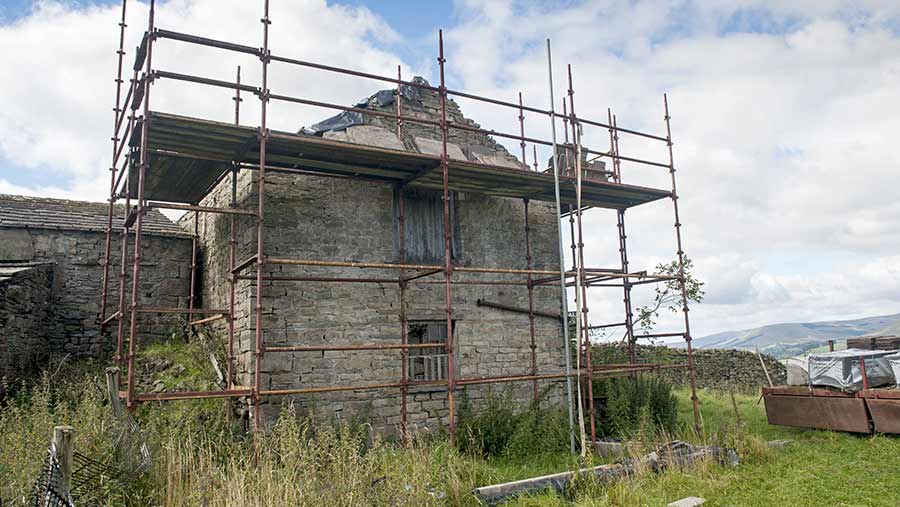5 tips to speed up planning applications
 © FLPA/Wayne Hutchinson/REX/Shutterstock
© FLPA/Wayne Hutchinson/REX/Shutterstock About 60% of the planning applications received by the planning office at Test Valley Borough Council are invalid, says Paul Jackman, head of planning and building at the council.
This generates a huge amount of work for his officers, he says, as they are forced to repeatedly go back to applicants and agents to get the necessary information. Getting it right early on is the best way to ensure an early recommendation.
See also: Expert advice on securing planning permission
At the recent British Institute of Agricultural Consultants’ rural planning conference, Mr Jackman gave five tips to help smooth the application process:
Common reasons for invalid applications
- No fee or insufficient fee
- Incorrect certificate (eg, an ownership certificate or agricultural holdings certificate)
- Application form incomplete
- Application not signed
- No location plan
- Inadequate plans (eg, missing tree reports)
- Plans don’t match the actual site
- No design and access statement
- No red line defining the boundary of the property
- Local checklist – local requirements will vary for each council
Planning validation requirements
- A completed application form
- Compliance with national information requirements
- Correct application fee
- Provision of local information requirements
1. Understand the Planning Practice Guidance
Published in March 2014, this was created to help standardise the approach and ensure applications contain all the necessary information.
The guidance tells your what you need to do when making an application. Read, understand and comply with it, or the application will not be registered.
If you are not complying with something on the list, you need to explain why.
2. Complete the application online
The time taken for councils to accept applications as meeting all requirements (validation) varies dramatically across the country from just three days in Test Valley to around a month elsewhere.
Submitting the application online means the information contained within the application will enter the planning back office faster, as it removes the need for it to be entered manually.
It also means the application can be processed as soon as it’s registered. Several refinements have been made to the online system recently to make the process easier.
3. Submit a fully completed application
Mr Jackman says the advice on filling in an application is more often than not ignored.
“This generates a huge amount of work for my staff because we have to go back and forth between applicants and agents.”
Mr Jackman adds that processing cannot start on incomplete applications as this invariably creates issues for the planning department.
Added to this, extra information received after the initial application creates the need for another round of public consultation; that’s more delay, more problems, more cost and more confusion for everybody involved in the process, says Mr Jackman. Some councils are starting to charge for invalid applications in an attempt to improve quality.
Don’t try and get away with it – for example, if there is a tree on the site, plot it and make sure there is a tree report because, if not, it will be discovered and that will cause problems down the line.
4. Consider the appropriateness of the application
The planning framework is positive about the rural economy, but planning officers have a mandate to protect the countryside. Ensure that any planning proposal has considered its impact on the countryside, and is appropriate in order to address these concerns.
5. Fully understand the context
What are the local issues the planning officer is working with? Read local papers to understand the context. Go and talk to neighbours and let them know that an application is likely to be made. But do not contact any consultees directly after the application has been made, this causes confusion and should be left to the planning officer.
Benefits and downsides of equestrian use
Jill Scrivener, equestrian rural planning specialist at planning consultant Bourne Rural, in Hampshire, identifies top issues to be aware of before applying for a change of use from agricultural to equestrian.
- Equestrian buildings do not qualify for any of the agricultural permitted development rights, so consider the long-term future use of the building before applying.
- A change of use will also have inheritance tax implications, as equestrian buildings do not benefit from agricultural property relief unless it is a stud farm.
- Non-domestic business rates apply for all equestrian facilities, and are forecast to rise between 180% and 365% – potentially making businesses unviable.
- Applying for a change of use of land is considered as planning and may trigger other requirements, such as a flood assessment, before being approved.
- Equestrian facilities are classified as previously developed land, known as brownfield, and offer greater opportunities for development than agricultural buildings.
